What are concrete anchors and how to use them?
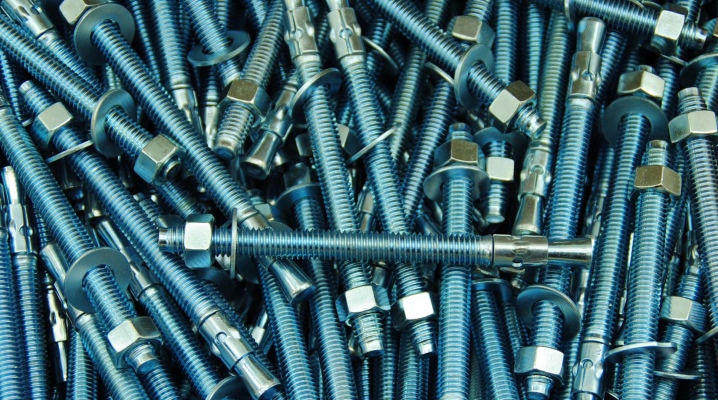
In order to firmly and reliably fasten structures or objects weighing more than 50 kg to various concrete surfaces, you will need to use special especially durable fasteners, which are called concrete anchors. Their use can also be advisable in cases where conventional types of fasteners cannot be used due to the high monolithic strength of the concrete surface. With the help of anchor fasteners, foundation elements, reinforced concrete floors are connected, with their help, interior partitions and walls are installed. The strength of the anchorage is so high that it can cope with quite high loads and allows for a fast and highly reliable fastener assembly.
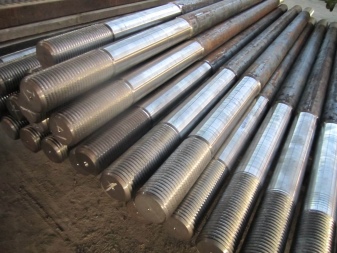
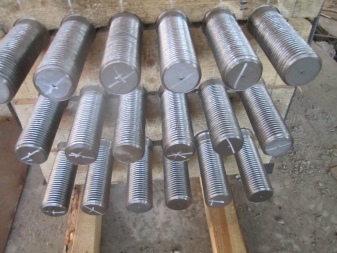
Peculiarities
The quality and technical characteristics of such hardware as an anchor for concrete are regulated by GOST standards. In appearance, the concrete work anchor looks like a bolt structure. This durable hardware is made of stainless or high-strength steel and can have a galvanized coating that protects the metal from corrosion. The shape of the anchor is similar to that of a cylinder having a cone-shaped widened part at one end.
The expanding part is called a spacer and after the anchor is installed in the prepared hole, it expands, thereby providing the structure with a tight fit in the concrete material.
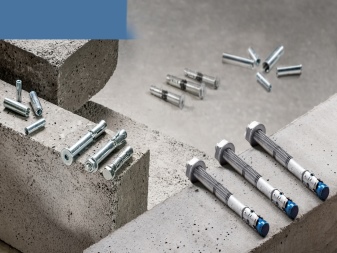
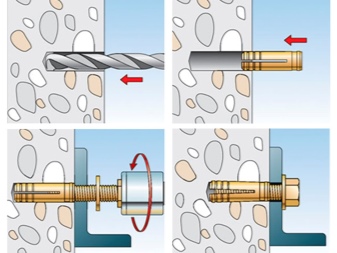
Any anchor is installed in a pre-prepared hole for it, which corresponds to the diameter of the hardware. After installation, the anchor is fixed inside the hole in several ways: it can be held due to the friction force arising between the fasteners and the concrete, or it can be fixed using an adhesive that is fed into the hole cavity.
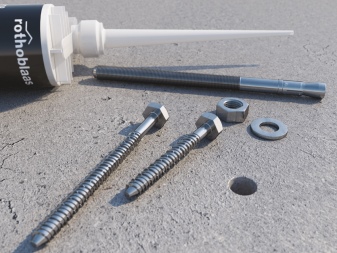
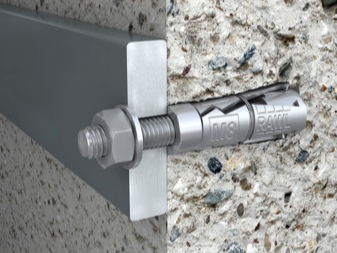
Anchor fasteners have a working part in the form of a rod, the length of which varies in the range of 45-200 mm. There is an internal threaded layer on the tapered part of the rod; in addition, the design includes a bushing equipped with profile recesses and a fastening nut. The device of the anchor is explained by the principle of its operation - during installation, when the hardware is screwed into the hole, its fasteners expand and fix the fastening at the installation site.
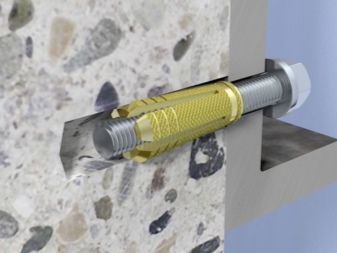
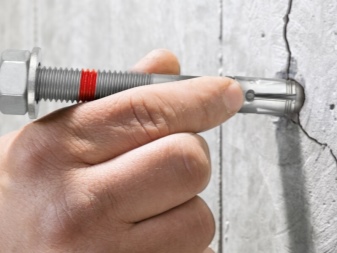
The concrete anchor can be applied for various functions. In total, there are 2 functional varieties of this hardware.
- Carrying function - it consists in performing the installation of products or structures. For example, dock the ceiling slabs, install beams or columns in their places, fix the cantilever ledge of the balcony, organize the installation of staircases or landings, fix engineering communications and electrical equipment, as well as hang a heavy chandelier structure, kitchen cabinets, hoods from the ceiling for household purposes etc. Anchor connections for hollow structures work no less effectively, for example, they are used to fix lags in hollow or concrete floors.
- Constructive function - its essence is to prevent displacement of structural elements or a unit, even in the case when stability, it would seem, is guaranteed by their large intrinsic mass. In addition, concrete anchors are used for straightening during construction work.
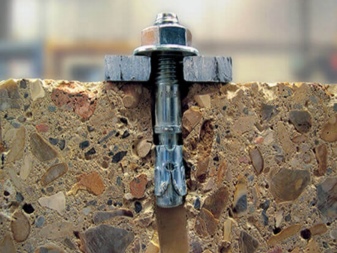
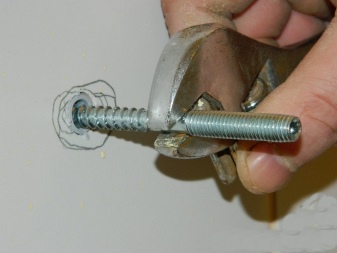
According to GOST, anchors are marked with letters and numbers.
The first parameter of values denotes the diameter of the working hole, the second parameter determines the length of the anchor, and the third parameter is the size of its threaded thread. All dimensions are in millimeters.
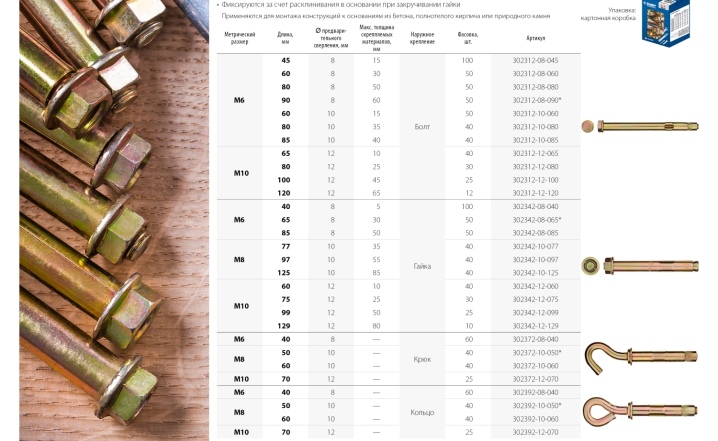
Species overview
Anchoring joints are used not only for dense concrete surfaces, but also for aerated concrete, as well as for aerated concrete as well. The classification of anchor hardware is subdivided according to the following operating parameters.
- Appointment - Distinguish between universal, ceiling, frame and foundation metal hardware. They can be used for fixing the timber, fixing the logs to the floor, joining wall panels.
- Appearance - metal anchors can be straight or curved with a hook.
- Construction type - prefabricated anchors or solid.
- Presence of thread - smooth working rod or threaded.
- For what type of concrete - for a monolith or porous material.
- Fixation type - through fixing, hammering, twisting, fixing with adhesive.
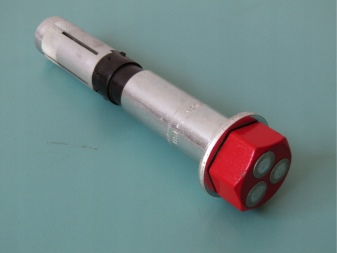
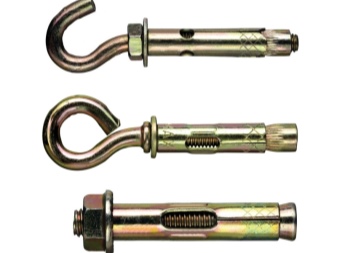
The fastening strength depends on the material from which the hardware is made. The strength level of high-strength steel is 7.0 or more.
This indicator can withstand very significant sheer loads.
Concrete anchors can be divided into 2 large groups related to the type of installation.

Mechanical
Anchor bolts of this type are mounted exclusively mechanically, depending on the installation method.
- Expansion anchor - this type of hardware has a working rod in its design, as well as a tip and an expanding cone with notches applied to it. In some versions of the anchor, the threaded rod can be replaced by a mounting ring or a hook, which serves to suspend items of heavy weight. With expansion anchors for concrete, the process of retention in the hole occurs due to the frictional force of the expanding part. Such products can be applied to dense concrete surfaces. It is noteworthy that in the case of dismantling, it is no longer possible to reuse such hardware.

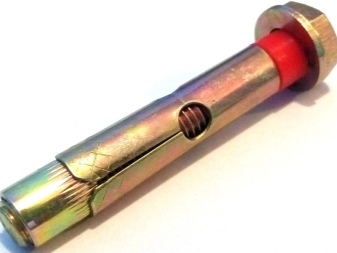
- Drop-in anchor - the length of these hardware is small, the rod has a thread and is equipped with an expanding cone. During installation, the cone performs wedging. Hardware is hammered into the prepared hole, it is wedged with a center punch, and then a rod with a cut metric thread is screwed into it. After installation, the fasteners do not protrude on the working surface - they are recessed in the hole, therefore such anchors are considered vandal-proof and fire-resistant options. A drop-in anchor for concrete is used to suspend duct and ventilation ducts from the ceiling, suspended ceilings and utilities are mounted.

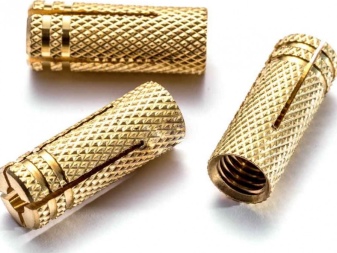
- Wedge anchor - the working part of the rod with the nut has a spacer head and a tapered stop on the shank. In the process of tightening the nut, the tip of the anchor is retracted and thereby realizes the mobility of the cone petals - they are displaced relative to the boundaries of the wall hole. It is better to use such hardware only for strong concrete; it is impractical to use it on brick or foam concrete masonry, since the fastening strength in such material will not be achieved. The dismantled anchor cannot be reused.

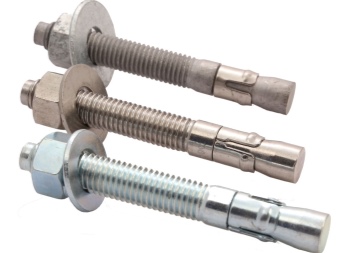
Mechanical anchors are used to create a reliable type of anchorage in dense concrete structures, since this kind of hardware requires deep immersion in the wall surface.
Chemical
Anchor bolts of this type are mounted using a rapidly polymerizing adhesive - it is this composition that is the retaining fastener. The adhesive polymer contains artificial resins, cement components, fine quartz sand as a filler and a chemical hardener. After the end of the polymerization process, the working part of the anchor in the form of a threaded base becomes a seating element of the fastening, where the bolt is then inserted.Such a structure forms a strong connection and can be used for porous concrete with a loose structure, as well as for brickwork made of bricks with voids.
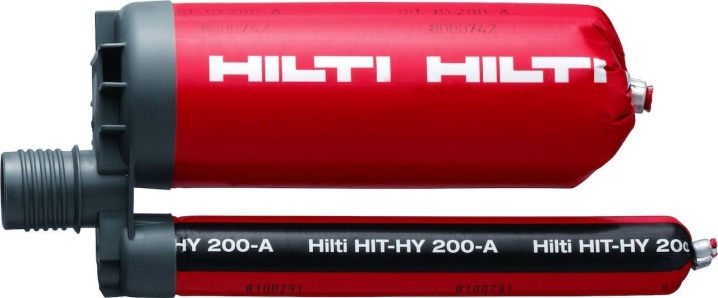
Chemical anchor structures are divided into 2 types - ampoule and injection. In the ampoule anchor, the adhesive is embedded in a special capsule, which collapses at the time of installation and goes into the cavity of the hole. The injection type of anchor implies the external introduction of glue into the anchorage cavity.
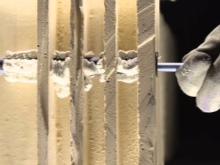
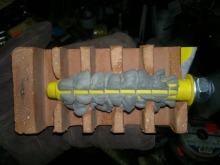
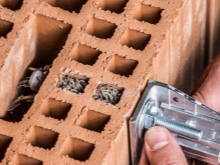
Dimensions (edit)
Product labeling at manufacturers' factories is regulated by the requirements of GOST and internal standards. Despite this, each anchor hardware has a common marking, which is present on absolutely all products. The parameters of the anchor depend on what material of the wall surface is to be worked with, as well as on the weight and dimensions of the structure.
Long anchor hardware is used when heavy-weight elements are mounted.
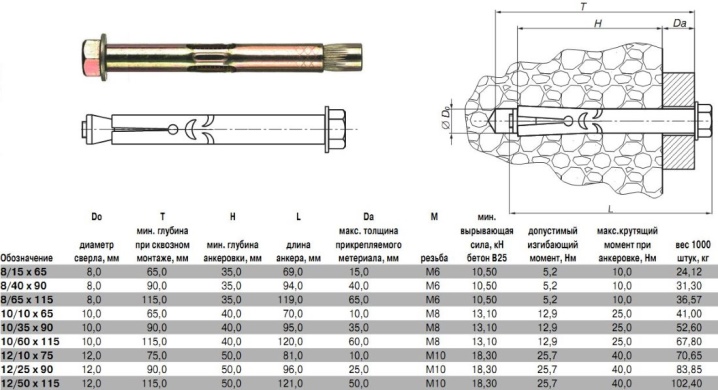
On the anchor, indicate its parameters in a digital designation and write what type of installation is necessary to perform fasteners. For example, the designation "wedge 20/200" can be read as a wedge mounting type, hardware diameter 20 mm, length 200 mm.
Chemical type anchors are marked according to the size of their adhesive capsules. The capsule diameter can range from 10 to 42 mm. The length of the chemical anchor is 80-360 mm. If you have a chemical injection anchor in front of you, then it will include an adhesive composition, the volume of which depends on the size of the hardware and can be from 150 to 825 mm. In addition to the glue, you will find an adapter and a mixer in the package.
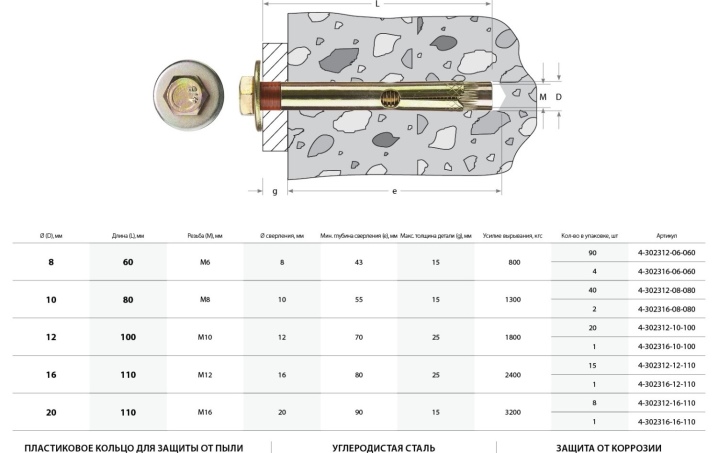
By diameter and length, anchors are subdivided into:
- small - their diameter does not exceed 8 mm, and their length is within 55 mm;
- average - their diameter does not exceed 8-12 mm, and the length is 55-120 mm;
- big - their diameter is 24 mm, and their length is 220 mm.
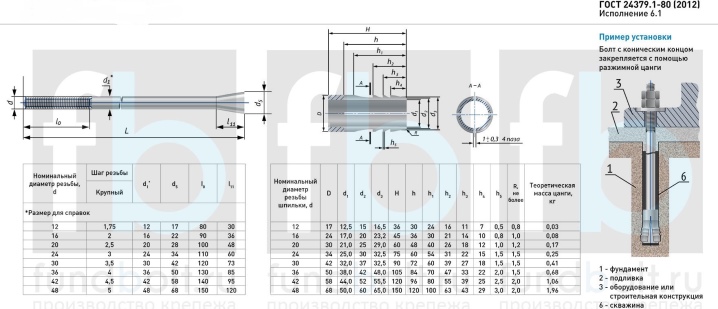
When marking the anchor, you can see 3 parameters, for example, M8 10 / 60-120:
- the letter M and the adjacent number indicate the diameter of the thread - for example, M8, M10, M12, M20 will mean that the hardware has a thread of 8, 10, 12 or 20 mm, respectively;
- followed by digital designations indicated through the fraction sign - the number on the left before the fraction sign indicates the outer diameter of the hardware in mm, it corresponds to the diameter of the drill that needs to drill a hole in the wall;
- the number to the right of the fraction sign indicates the length of the anchor in mm;
- the number on the right, separated by a hyphen, is the thickness of the part.
Most often, such markings have concrete anchors used for foundation work.
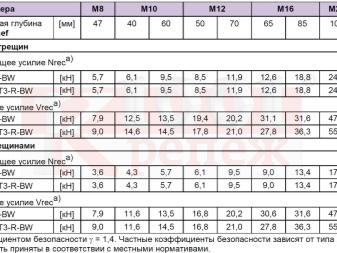

Popular brands
The concept of anchor originated in Germany, where Fischer was the first to manufacture these hardware - this is where all modern anchor fasteners come from. Today anchor hardware is produced all over the world, including in our country.
This type of especially durable fasteners can be presented in retail chains with a large assortment, which is distinguished by the quality of performance and brands of manufacturers.
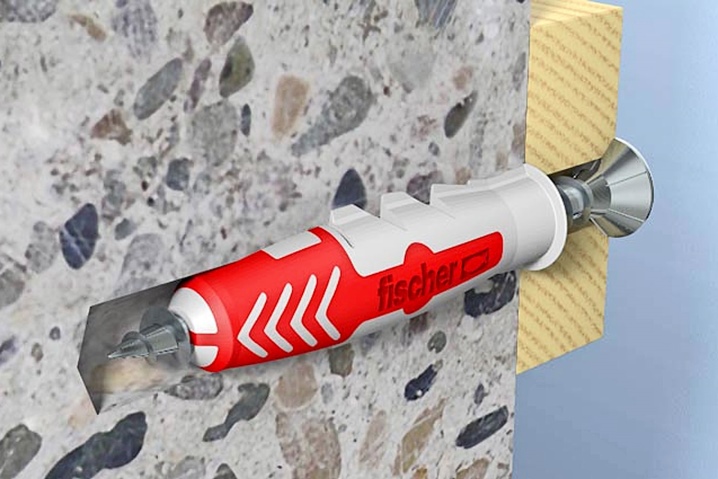
Among domestic manufacturers of anchors for concrete of mechanical and chemical type of fasteners, the most popular are products of the brands "Anker-NN" and "MKT". In addition, concrete anchors are produced:
- Pribaikalsk metalwork plant;
- Ural Pipe Plant;
- Ramenskiy plant of metal structures;
- Novosibirsk plant of metal structures;
- Anker company - Vladivostok;
- Rusich company;
- KERN company - Moscow region.
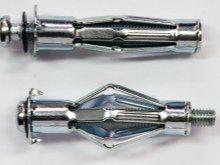
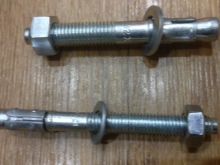
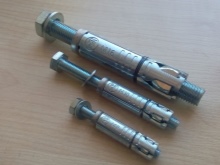
The following brands can be distinguished from foreign manufacturers:
- Fischer - Germany;
- HILTI - Germany;
- MUNGO - Switzerland;
- Sormat - Finland;
- HIMTEX - Great Britain;
- Superbond - Germany.
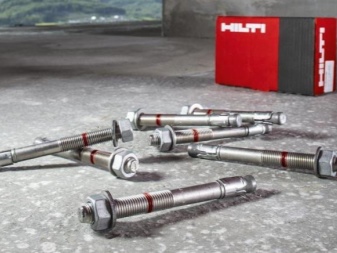

When it comes to chemical anchoring, the Superbond and HILTI brands are the top brands.
Fasteners from these manufacturers can work in direct contact with water, and they also do not lose their qualities in the range from -40 to + 150 ° C.
These manufacturers announced themselves 70 years ago and successfully occupy a fairly large market segment due to the high quality of their products.

Instructions for use
In order to perform a reliable and durable fastening, before hammering the anchor, it is necessary to calculate its resistance to pulling out of the wall under the influence of the mass of the structure. You can perform such calculations if you use professional tables containing the technological characteristics of anchor hardware. Another prerequisite for high-quality fasteners is to install them correctly. The strength of the fastening is influenced not only by the weight of the structure, but also by the density of the wall material. The distance of the hole, measured from the outside edge into the wall, is also important when installing.
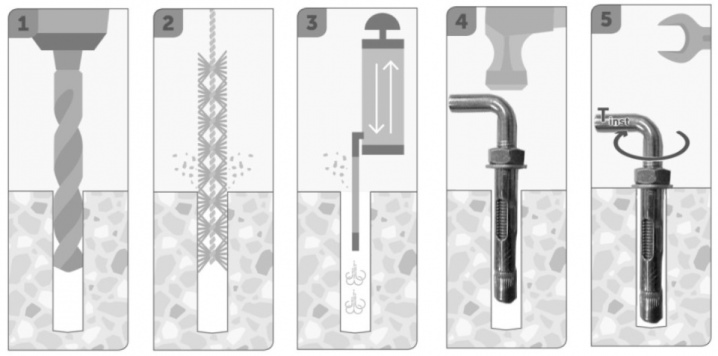
During construction work, the installation of anchors is performed even before the concrete is poured or after that, on the already completed monolithic base. When pouring concrete, the anchor structure must be fixed to the reinforcement frame using a welding joint or using a knitting wire, after which the concrete composition is poured. To protect the threaded connection, it is wrapped in plastic wrap. The following installation steps are performed after the monolithic surface has completely hardened.
There are other options for fixing the anchor inside the concrete surface. Preparing the mounting hole - before screwing the anchor in the wall, pre-drill a hole.
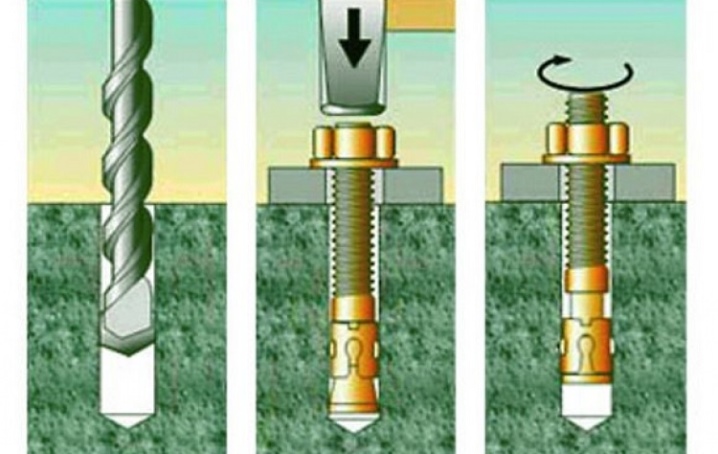
To do this, make a markup where the hardware will be located. Then, using an electric drill or punch, a hole is made that will be 10 mm longer than the length of the anchor. As for the diameter of the anchor, it must match the diameter of the drill.
After the hole is ready, dust and debris are removed with a vacuum cleaner. When there is a thick finish on the wall, the length of the hole must be increased by the thickness of the finish, because the finish is not a dense monolithic structure. When making a hole in order to hammer the anchor as tightly as possible, the diameter of the drill can be taken 0.5 mm less than the diameter of the hardware. The most convenient way to work in this case is a hammer drill with a drill, which has a victorious tip.
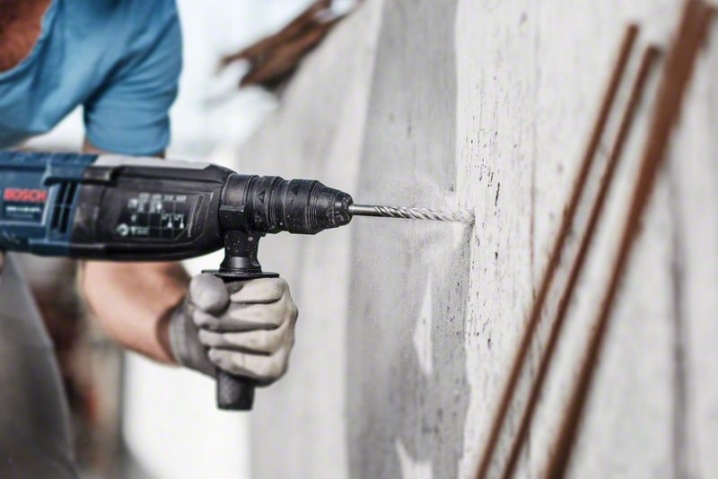
Installation of a mechanical type of anchor with a nut - the bolt rod is placed into the prepared wall hole and hammered into it with a hammer, then the nut must be tightened using a wrench. This must be done carefully so as not to spoil the outer part of the anchor where the thread is located. When you need to pull the hardware out of the concrete wall, it will be enough to unscrew its nut in the opposite direction.
If it is necessary to perform hanging fasteners on a vertical surface, then use anchors equipped with a bracket in the form of a hook instead of a nut. The bracket will need to be screwed all the way into the anchor structure, making sure that the hook head is in the correct position to hang the structure. Each anchor is supplied with an accompanying user manual. Before installation, you need to study it and find out how many revolutions of the bracket can be performed during installation.
If it is required to screw the anchor into a loose aerated concrete or foam concrete surface, then the bracket cannot be twisted as far as it will go, since this action will cause the wall material to crumble.
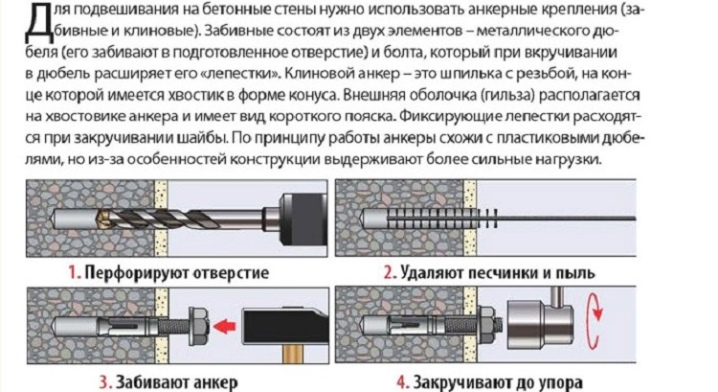
Installation of a chemical anchor - in hardware of this type, the adhesive can be located inside the capsule or in a separate container. The installation of such an attachment consists in placing the capsule in the prepared hole, and then screwing in the stud or bolt of the anchor. At the same time, the glue comes out into the cavity of the hole and begins to polymerize. It is necessary to wait for complete polymerization, the time of which is indicated in the instructions attached to the chemical anchor.It will be impossible to get the anchor out of the wall after the adhesive has hardened.
If the adhesive is located in a separate container, then the glue cartridge is installed in the construction and assembly gun and, pressing the trigger, squeeze the contents of the container into the hole, completely filling it. Then the anchor hardware is screwed into the adhesive composition and wait for the complete polymerization of the composition. After that, the suspension structure can be hung on the mount.
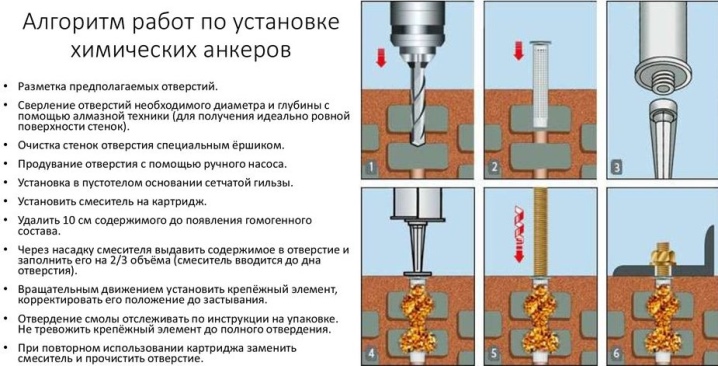
What is an anchor bolt, see below.













The comment was sent successfully.